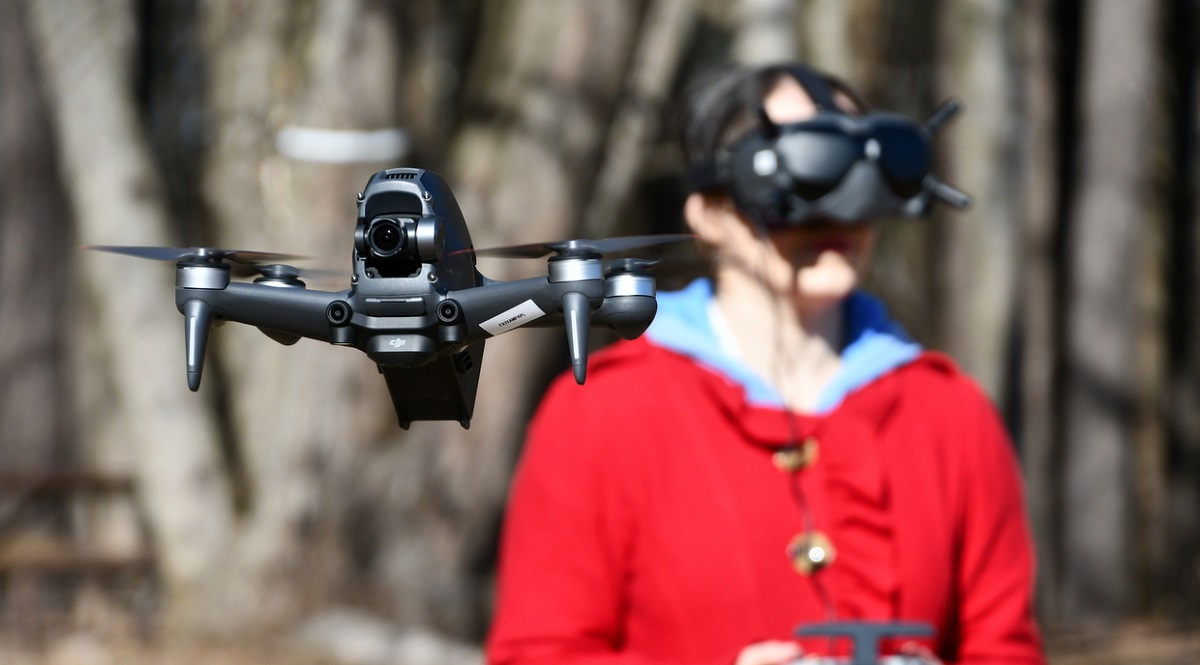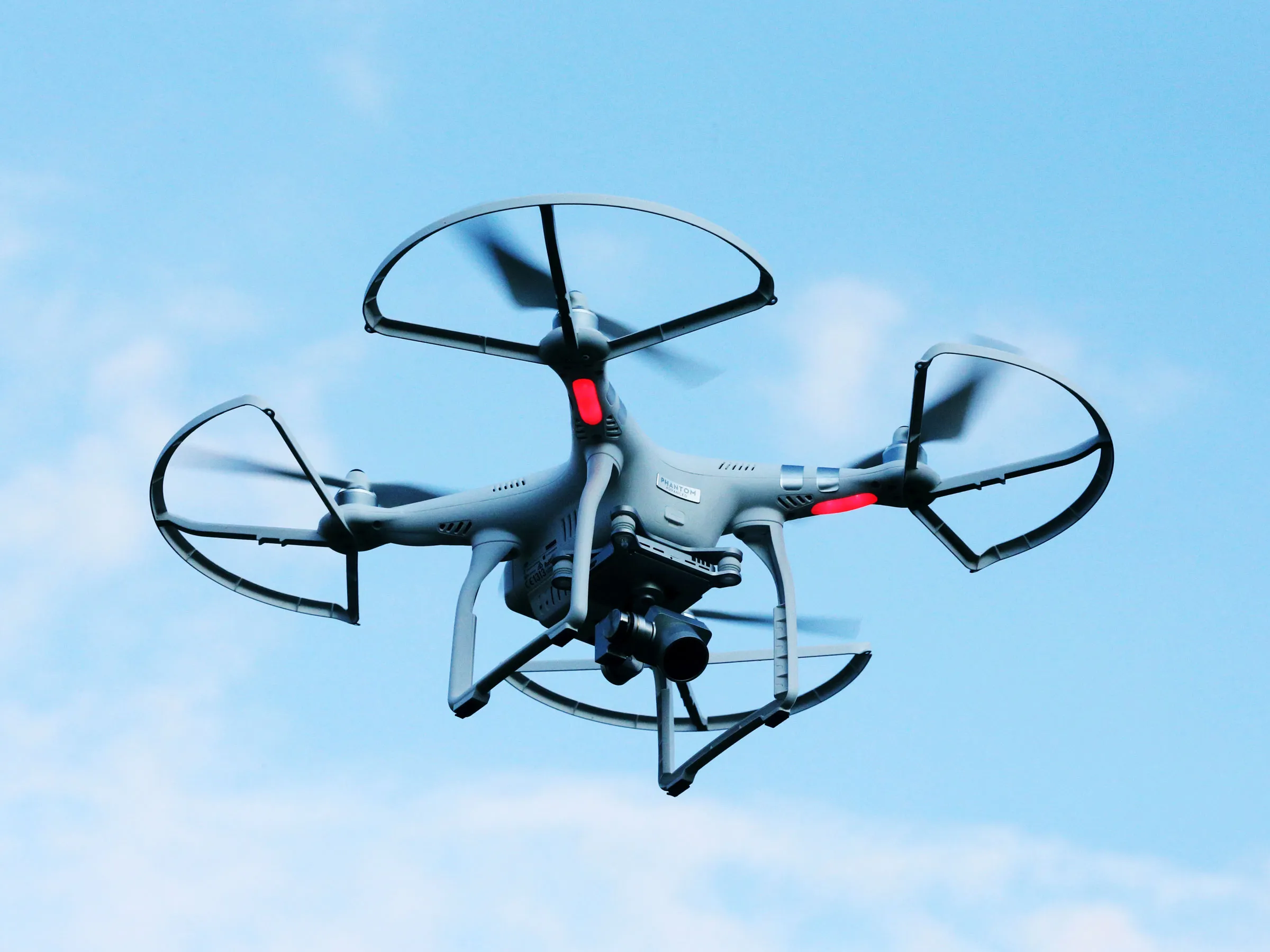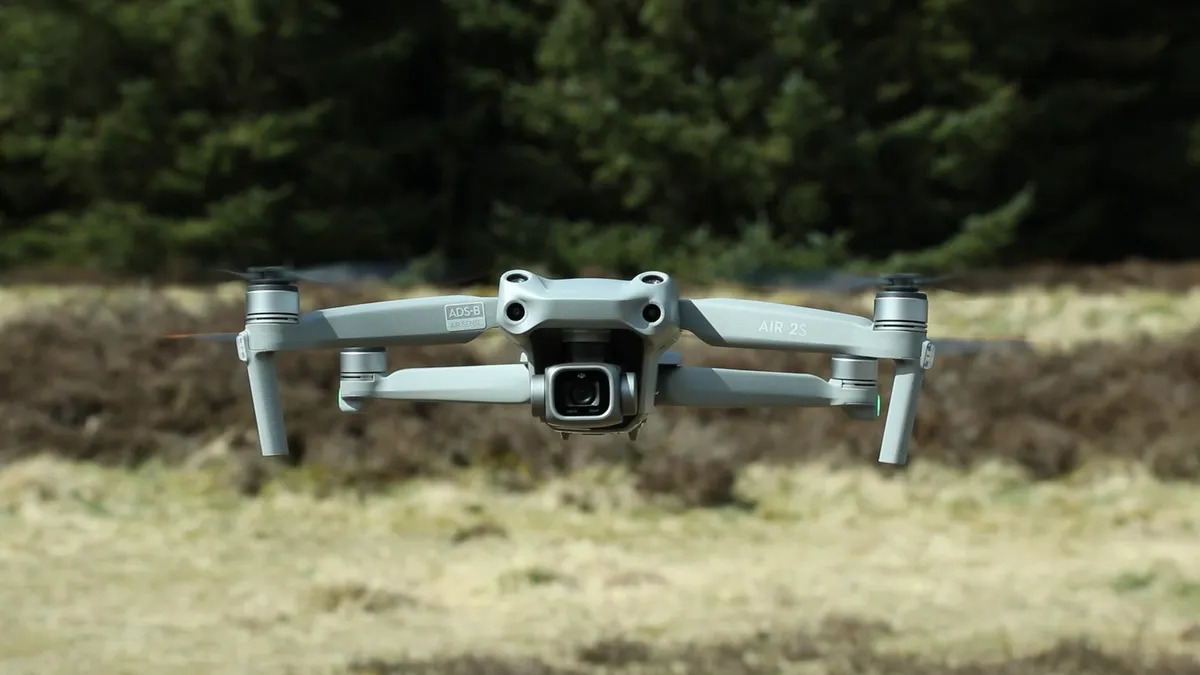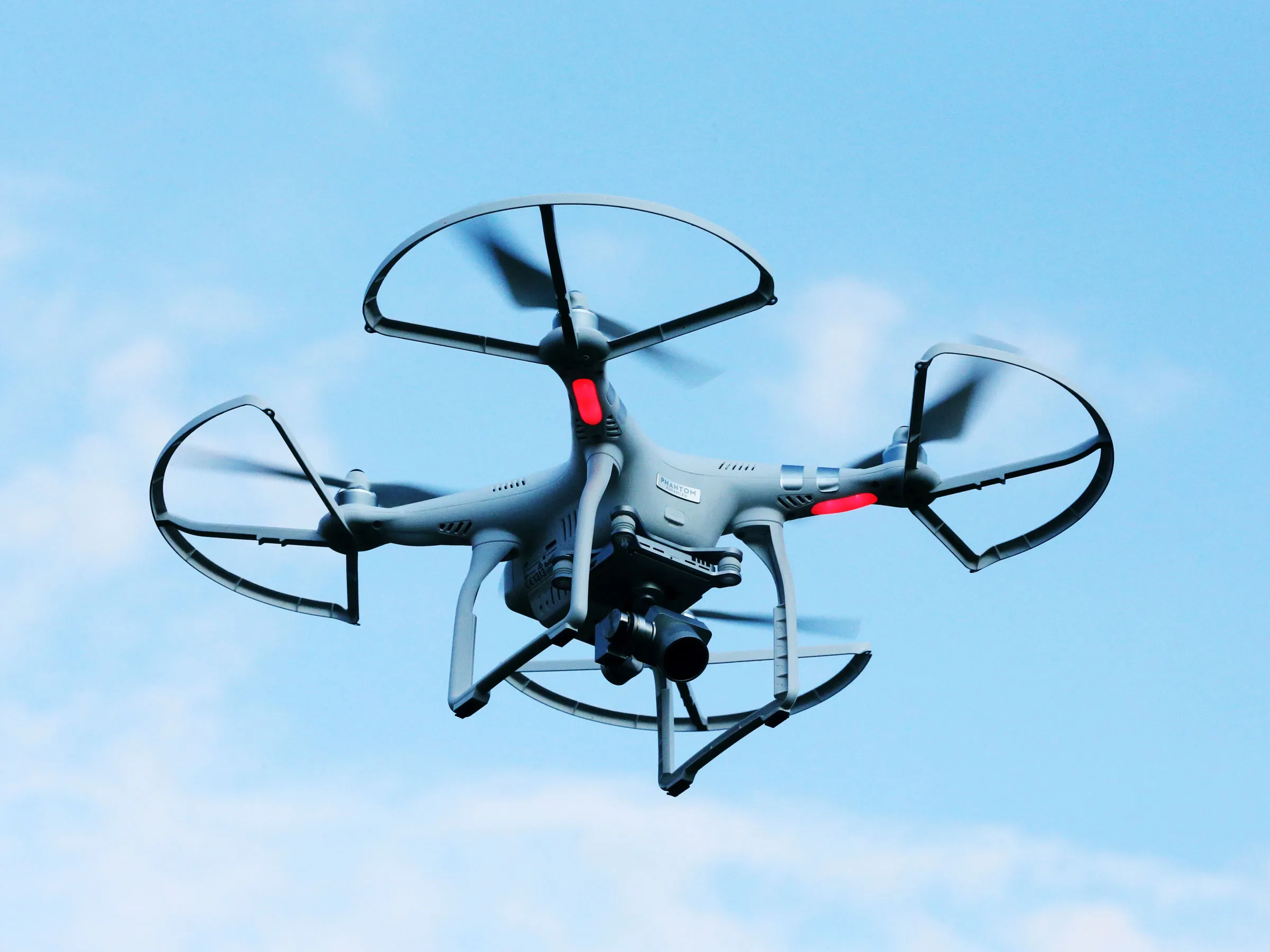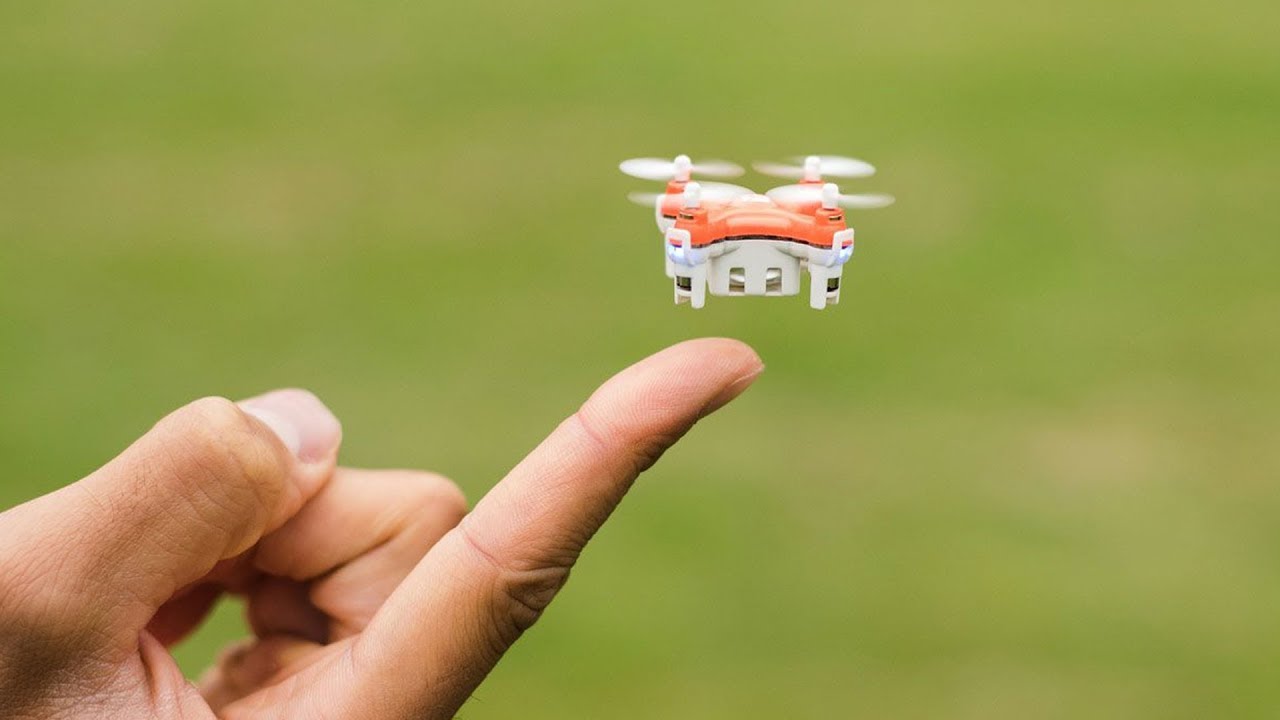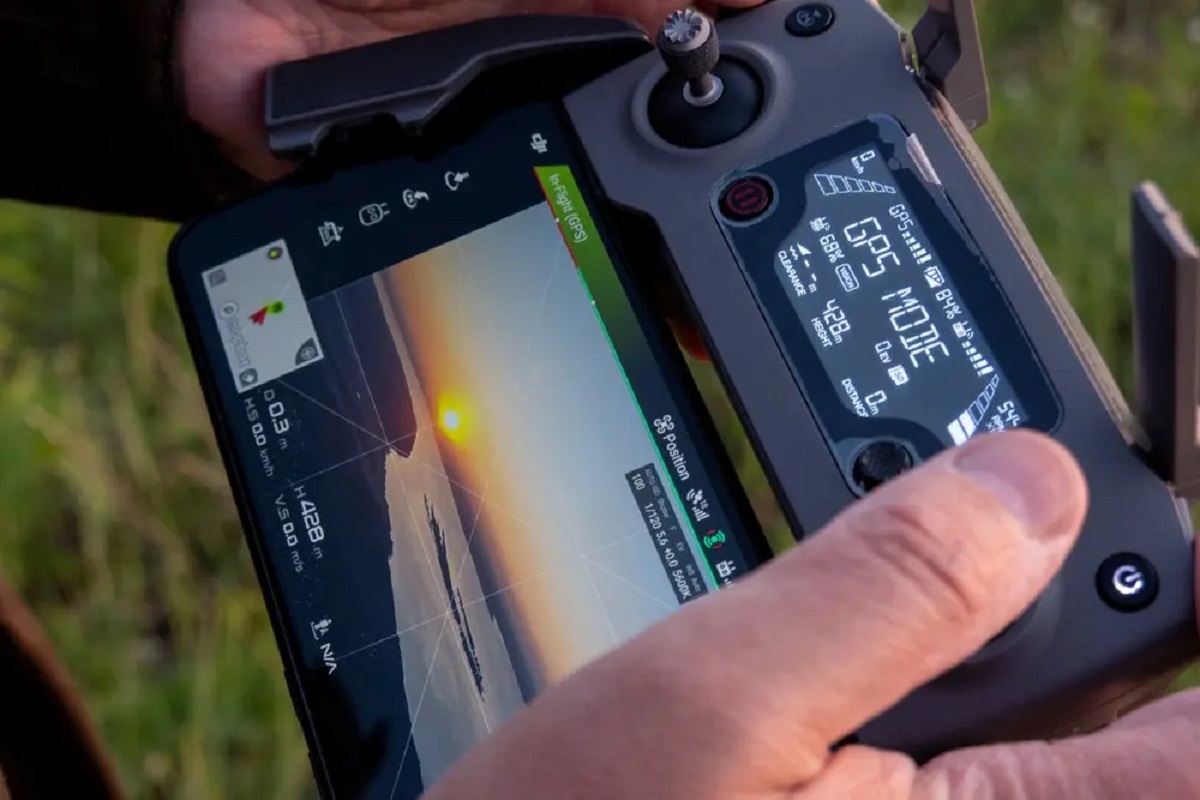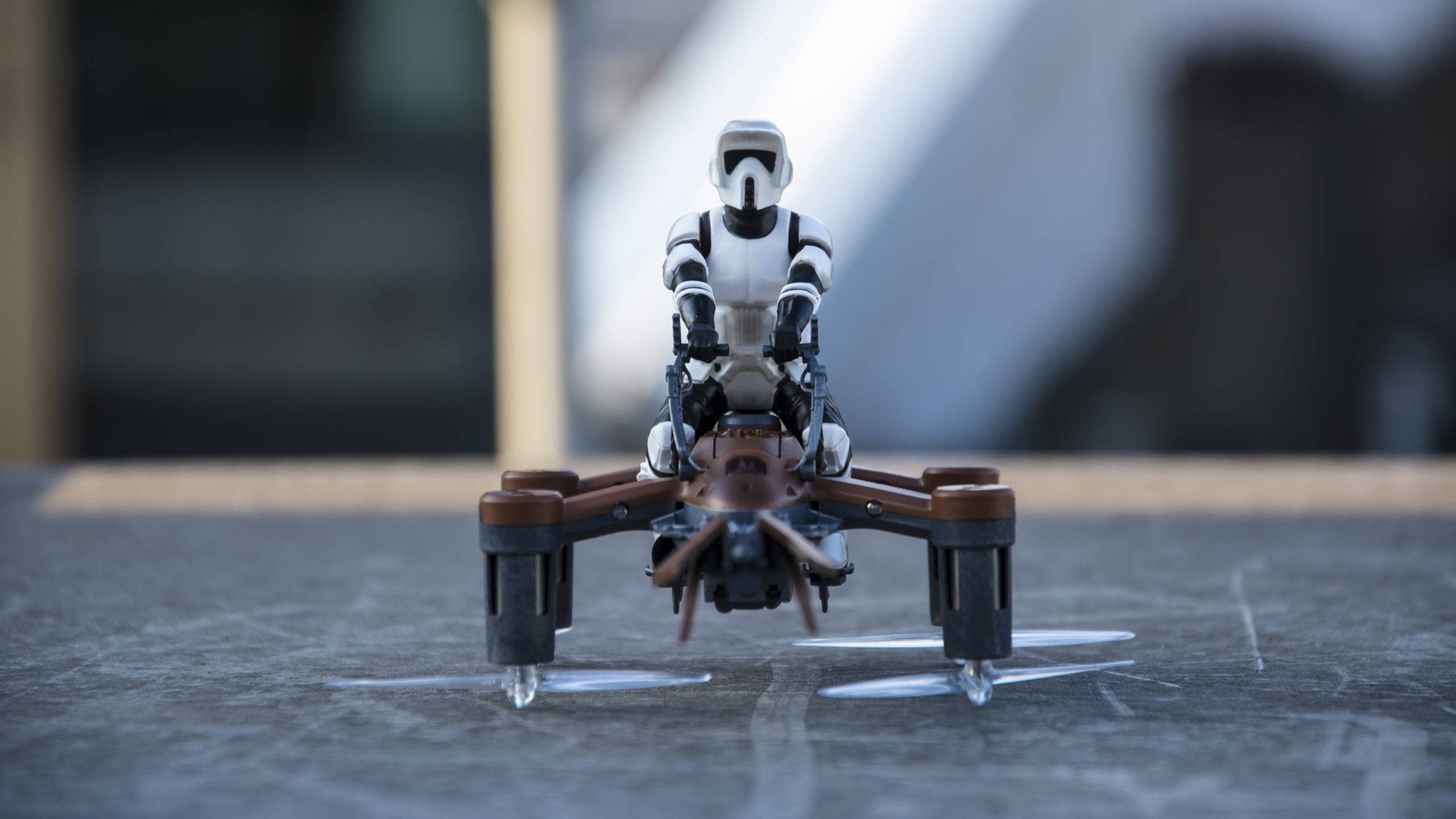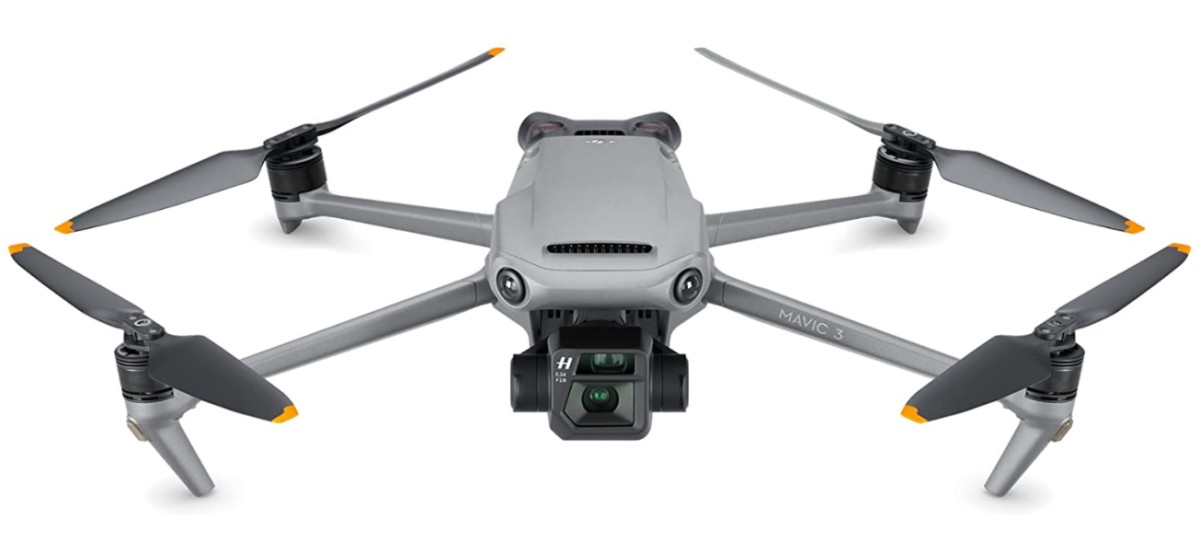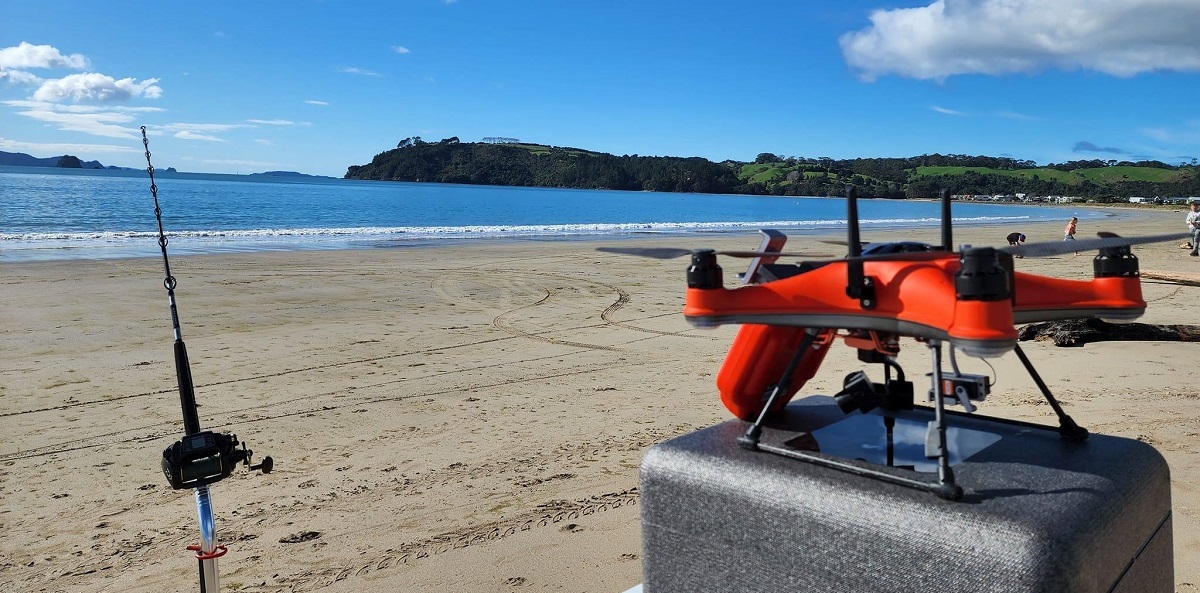Introduction
Welcome to the exciting world of drone flight! Drones, also known as unmanned aerial vehicles (UAVs), have become increasingly popular in recent years. These high-tech devices offer endless possibilities for aerial exploration, photography, and even package deliveries. However, before taking to the skies, it’s important to understand that flying a drone requires both knowledge and practice.
In this article, we will explore the basics of drone flight and provide you with essential information to help you become a skilled drone pilot. Whether you’re a recreational user or aspiring professional, mastering the art of flying a drone can be an incredibly rewarding experience.
First, let’s understand the basic principles of drone flight. Drones are equipped with rotors that create lift, similar to a helicopter. By controlling the speed of the rotors, a drone can ascend, descend, and maneuver in different directions. Additionally, drones are equipped with stabilizing sensors, such as accelerometers and gyroscopes, which help maintain stability in flight.
However, flying a drone is not as simple as just pushing a few buttons. It requires practice and a thorough understanding of the controls and capabilities of your specific drone model. Taking the time to learn the basics and practicing in a controlled environment will greatly improve your piloting skills and reduce the risk of accidents.
Before you delve into the excitement of flying a drone, it’s important to familiarize yourself with the legal and safety considerations. Different countries and regions have specific regulations governing drone flight, including restrictions on altitude, distance from airports, and areas where drone flight is prohibited. Understanding and adhering to these regulations is crucial to ensure you are flying your drone legally and responsibly.
Understanding the Basics of Drone Flight
Before taking flight, it’s essential to understand the basic principles of drone flight. By grasping these fundamentals, you’ll have a solid foundation for piloting your drone effectively and safely.
The controls of a drone typically include a transmitter or remote controller, which allows you to manipulate the drone’s movement. Most drones have four main controls: throttle, pitch, roll, and yaw.
The throttle control adjusts the power output of the drone’s rotors and controls its altitude. Pushing the throttle forward increases the rotor speed and lifts the drone into the air, while pulling it back reduces the power and descends the drone.
Pitch and roll refer to the forward/backward and left/right movement of the drone, respectively. By tilting the drone forward or backward, you can make it move in those directions. Tilting it left or right enables lateral movement. These controls allow you to navigate the drone through the air and explore different areas.
Finally, the yaw control rotates the drone clockwise or counterclockwise. This control helps change the direction the drone is facing without affecting its position in the air. Mastering yaw control is especially important for capturing smooth and controlled aerial footage.
It’s important to note that drones can come with various flight modes, such as GPS-assisted, altitude hold, or manual mode. These modes offer different levels of assistance and control, catering to both beginners and experienced pilots. Familiarize yourself with your drone’s specific flight modes to take full advantage of its capabilities.
Understanding the behavior of a drone during flight is also crucial. Drones are subject to the forces of wind, which can affect their stability and control. It’s essential to fly in suitable weather conditions, avoiding strong wind gusts that may make control difficult.
Additionally, being aware of the battery life and flight time of your drone is important. Most drones have limited flight durations, typically ranging from 10 to 30 minutes, depending on the model. Planning your flight sessions accordingly and ensuring a fully charged battery will prevent unexpected cut-offs during flight.
By familiarizing yourself with the basic controls, flight modes, and drone behavior, you’ll be well-prepared to navigate your first flight. However, keep in mind that practice is key to mastering the art of drone flight. Take your time, start with simple maneuvers, and gradually increase the complexity of your flights as you gain confidence in your piloting skills.
The Importance of Practice and Training
When it comes to flying a drone, practice truly makes perfect. Regardless of your skill level, investing time and effort into practicing and receiving proper training can significantly enhance your piloting abilities and ensure a safe and enjoyable flying experience.
One of the fundamental reasons why practice is crucial is that drone flight requires hand-eye coordination and spatial awareness. The more you practice controlling your drone, the more your brain and muscles develop the necessary connections to execute precise maneuvers with ease. Regularly engaging in flight practice will help you fine-tune your control and response skills, enabling you to navigate through obstacles, capture stunning aerial shots, and handle unexpected situations.
Joining a drone training program or community can also be highly beneficial. These resources often provide expert guidance, comprehensive tutorials, and access to experienced pilots who can share valuable advice and tips. By receiving proper training, you’ll gain a deeper understanding of drone flight principles, safety precautions, and advanced techniques.
Furthermore, training programs often include simulated flight exercises that allow you to practice in a controlled virtual environment. Simulators replicate real-world flying conditions, helping you familiarize yourself with different scenarios and perfect your maneuvers without the risk of damaging your drone. These simulations can be especially valuable for novice pilots, building confidence before transitioning to actual flight.
Additionally, practicing in various environments and weather conditions is essential. Different locations and weather conditions bring unique challenges, such as wind gusts, varying light conditions, or obstacles. By exposing yourself to diverse flying conditions, you’ll develop adaptability and learn how to adjust your flying style accordingly. This versatility will make you a more skilled and confident pilot.
Regularly reviewing and analyzing your flight footage can also contribute to your improvement. By examining your recorded flights, you can identify areas for improvement, notice patterns in your flying behavior, and refine your techniques accordingly. This self-evaluation will allow you to continuously enhance your piloting skills and become a more proficient drone operator.
Remember, there is always more to learn and explore in the world of drone flight. Even experienced pilots benefit from ongoing practice and training. By dedicating time to refine your skills and staying up-to-date with the latest advancements, you’ll unlock new possibilities and elevate your drone-flying abilities.
Legal and Safety Considerations
Before taking to the skies with your drone, it is crucial to understand and adhere to the legal and safety considerations surrounding drone flight. Familiarizing yourself with these regulations will not only ensure compliance but also help maintain the safety and privacy of yourself and others.
First and foremost, familiarize yourself with the laws and regulations governing drone flight in your country or region. Different jurisdictions may have specific requirements pertaining to drone registration, pilot licensing, flight restrictions, and privacy considerations. Ensure that you are aware of and comply with all relevant regulations to avoid any legal consequences.
One common requirement is registering your drone with the local aviation authority. This usually applies to drones above a certain weight threshold. Registering your drone provides essential information and helps authorities track and identify lost or mishandled drones.
Another key consideration is respecting airspace restrictions. Certain areas, such as airports, military installations, and national parks, are designated as no-fly zones. It is crucial to consult flight maps or mobile applications to identify restricted areas and adhere to the restrictions in place. Flying your drone in restricted airspace not only poses a safety risk but may also result in legal consequences.
Privacy is an important aspect to consider when operating a drone. Always be mindful of not invading the privacy of others, especially when capturing photos or videos. Avoid flying in areas where privacy expectations may be violated, such as people’s backyards or private property. Respecting privacy not only protects the rights of individuals but also helps maintain a positive perception of drone users in the community.
Ensuring safety during drone flight is paramount. Before each flight, conduct a proper pre-flight inspection, checking for any damaged or loose parts that may compromise the drone’s operation. Verify that the battery is fully charged and securely attached. Additionally, follow safety guidelines such as keeping a safe distance from people, animals, and objects, and monitoring your drone at all times during flight.
It’s important to consider the potential risks associated with the environment and weather conditions. Avoid flying in strong winds, rain, or foggy conditions, as these can affect the stability and control of the drone. Be aware of any potential obstacles or hazards in the vicinity and maintain a safe operating distance.
Being a responsible drone pilot is not only about following regulations but also about fostering a positive community of drone enthusiasts. Engage in respectful and considerate behavior, educate others about proper drone use, and be open to learning and adapting as the drone industry evolves.
By understanding and adhering to legal and safety considerations, you can enjoy the thrill of drone flight while ensuring the safety of yourself, others, and the surrounding environment.
Dealing with Weather and Environmental Factors
When it comes to flying drones, understanding and effectively managing weather and environmental factors is crucial for a safe and successful flight. Being aware of these factors and making informed decisions will help you optimize your flying experience and prevent any potential hazards.
One of the primary environmental factors to consider is wind. Wind speed and direction can greatly impact a drone’s stability and control. It’s important to check the weather forecast before each flight and avoid flying in strong winds, especially if you’re a beginner. Strong gusts can cause the drone to drift or lose control, leading to accidents or crashes. If you encounter wind during flight, it’s important to make controlled adjustments with the controls to compensate for the wind’s effect and maintain stable flight.
Another environmental consideration is precipitation. Flying during rain, snow, or foggy conditions is generally not advised, as moisture can damage the drone’s electrical components and affect its performance. In addition, precipitation can hinder visibility, making it difficult to navigate and potentially resulting in collisions or loss of the drone. However, if your drone is specifically designed for wet conditions, such as a waterproof or water-resistant model, you may have more flexibility in flying in light rain or mist.
Temperature extremes should also be taken into account. Extremely hot or cold temperatures can impact the drone’s battery life and performance. Cold temperatures, in particular, can cause battery capacity to decrease temporarily, leading to shorter flight times. It’s important to monitor the battery level during flight and allow the drone to warm up in colder temperatures before taking off.
Choosing an appropriate flying location is another factor to consider. Avoid areas with dense trees or power lines that can obstruct your line of sight or pose a risk of entanglement. Open areas with minimal obstacles allow for safer and more enjoyable flying experiences. Additionally, it’s important to respect and abide by any local regulations or restrictions on where drones can be flown.
Flight time is another consideration impacted by environmental factors. In colder temperatures, batteries tend to drain faster, while hot weather can potentially overheat the drone’s components. It’s essential to plan your flights accordingly, keeping in mind the limitations imposed by temperature conditions.
Lastly, flying during low-light conditions, such as sunset or night-time, requires additional caution. Reduced visibility can make it harder to navigate and spot potential obstacles. If you do plan to fly in low light conditions, ensure that your drone is equipped with proper lighting to improve visibility.
By keeping a keen eye on weather forecasts and considering environmental factors, you can make informed decisions about when and where to fly your drone. Prioritizing safety and being mindful of your surroundings will help ensure an enjoyable and incident-free flight experience.
Handling Different Types of Drones
With the wide variety of drones available on the market today, it’s important to understand how to handle different types of drones. From small toy drones to professional-grade aerial cameras, each drone comes with its unique features and flight characteristics. Knowing how to handle your specific drone will enhance your piloting skills and allow you to fully capitalize on its capabilities.
First, familiarize yourself with the different classifications of drones. Toy drones are typically small, lightweight, and designed for beginners or casual pilots. They often feature simplified controls and limited flight capabilities. Intermediate-level drones are more advanced, offering additional features such as built-in cameras or obstacle avoidance systems. Professional-grade drones are larger, more sophisticated, and commonly used for commercial purposes or capturing high-quality aerial footage.
Getting to know your drone’s controls and features is essential. Read the instruction manual thoroughly and spend time practicing with the drone’s controls in a controlled environment. Understanding how to adjust the throttle, pitch, roll, and yaw controls specific to your drone model is critical for smooth and precise flight.
Learning about your drone’s flight modes is also important. Some drones have multiple flight modes, such as GPS-assisted or follow-me mode, which can automate certain flight functions. Knowing how to activate and use these modes can be beneficial in different scenarios, such as capturing aerial footage or navigating complex flight paths.
Additionally, understanding the battery life and flight time of your drone is crucial. Each drone model has a specific flight duration, typically ranging from 10 to 30 minutes. It’s important to keep track of the battery level during flight and return the drone to safety before the battery runs out. Knowing your drone’s limitations will help you plan your flights effectively and prevent unexpected mid-air battery failures.
Furthermore, if your drone is equipped with a camera, learn how to operate and control it effectively. Familiarize yourself with the camera settings, such as resolution, frame rate, and exposure controls, to capture high-quality photos and videos. Practice maneuvering the drone while simultaneously controlling the camera to capture smooth and well-framed shots.
It’s worth mentioning that different drones may have varying flight characteristics due to their size, weight, and design. For instance, smaller drones may be more nimble and responsive, while larger drones may require more space and take longer to accelerate or decelerate. Take the time to get a feel for your drone’s flight characteristics, and adjust your piloting techniques accordingly.
Lastly, always follow safety guidelines and respect local regulations when operating your drone. Avoid crowded areas, be mindful of other people and their privacy, and maintain a safe distance from obstacles and buildings. Responsible drone handling not only ensures your safety and that of others but also helps to promote a positive image of drone users in the community.
By understanding and mastering the handling techniques specific to your drone, you’ll be able to fully enjoy its capabilities and explore the limitless possibilities of drone flight.
Common Challenges and Troubleshooting Tips
While flying a drone can be an exhilarating experience, it’s not without its challenges. From technical difficulties to unexpected obstacles, drone pilots often encounter various issues during their flights. Knowing how to troubleshoot these common challenges will help you overcome obstacles and maintain a smooth and safe flying experience.
One common challenge that drone pilots face is loss of signal between the drone and the remote controller. This can happen due to interference from other electronic devices or flying in areas with a high concentration of signals. To troubleshoot this, ensure that you are flying in an open area away from sources of interference. Maintain a clear line of sight between the drone and the remote controller, and always check the signal strength displayed on your controller’s screen.
Battery-related issues can also arise during flight. The battery may drain quickly, causing a sudden loss of power and forcing the drone to land unexpectedly. To avoid this, always make sure your battery is fully charged before each flight and monitor the battery level throughout the flight. Additionally, extreme temperatures, such as cold weather, can affect battery performance. Keep your batteries warm and avoid flying in very low temperatures to prolong battery life.
Another common challenge is dealing with unexpected weather changes. It’s important to monitor weather conditions before and during your flight. If you encounter sudden winds or rain, consider landing your drone immediately to prevent damage. Additionally, flying in windy conditions requires adjustments to compensate for the wind’s effect on your drone’s stability. Practice flying in varying wind conditions to improve your piloting skills.
Crashes and collisions are other challenges that pilots may face. Accidents can occur due to misjudgment, technical malfunctions or collisions with objects or obstacles. To avoid crashing your drone, always fly in open areas with minimal obstacles. When flying in confined spaces or around obstacles, use the drone’s obstacle avoidance features (if available) or fly with caution. Practice precise maneuvers and familiarize yourself with the drone’s flight capabilities to reduce the risk of collisions.
GPS-related issues can also impact drone flight. Failure to acquire a GPS lock can lead to unstable flight and difficulties in maintaining position and altitude. If your drone is struggling to acquire a GPS signal, try recalibrating the compass or restarting both the drone and the remote controller. In some cases, you may need to fly in manual mode or fly in areas with a stronger GPS signal.
Lastly, knowing how to address firmware or software updates is essential. Regularly updating the firmware of your drone and remote controller ensures you have the latest features and fixes for any known issues. Follow the manufacturer’s instructions and recommendations for updating firmware and software to maintain optimal performance and reliability.
By familiarizing yourself with these common challenges and practicing troubleshooting techniques, you’ll be better prepared to handle unexpected issues during your drone flights. Remember, patience, practice, and a proactive approach to resolving problems will help you become a skilled and confident drone pilot.
Advancing Your Drone Flying Skills
As you gain experience and confidence in flying drones, you may want to take your skills to the next level. Advancing your drone flying skills not only enhances your piloting abilities but also unlocks new creative possibilities. Here are some steps you can take to elevate your drone flight expertise.
Continued practice is key to advancing your skills. Regularly fly your drone and dedicate time to hone your control and maneuvering abilities. Try practicing different flight patterns, such as figure eights, orbits, or flyovers, to improve your precision and control. Experiment with different flying speeds and altitudes to expand your flying repertoire.
Exploring different flight modes can also help you advance your drone flying skills. Many drones offer advanced flight modes such as waypoint navigation, follow-me mode, or active track features. Understanding and utilizing these modes can help you automate certain flight tasks and capture more dynamic and cinematic shots.
Once you have mastered the basics of flying, consider expanding your knowledge of aerial photography and videography techniques. Learn about framing, composition, and camera settings to capture stunning aerial shots. Experiment with different camera angles and perspectives to bring a unique visual appeal to your photos and videos. Study photography or videography principles to improve your understanding of light, composition, and storytelling techniques.
To fully unlock the potential of your drone, consider investing in additional accessories. For example, ND (neutral density) filters can help you control exposure in different lighting conditions, allowing you to capture well-balanced and cinematic footage. Extra batteries, propellers, and memory cards are also essential for extended flight sessions. Having the right tools and accessories will provide you with more flexibility and a better overall flying experience.
Connecting with the drone community can be highly beneficial in advancing your skills. Join online forums or social media groups dedicated to drones, where you can ask questions, learn from experienced pilots, and share your own experiences. Attending local drone meetups or workshops is another great way to connect with like-minded individuals and participate in hands-on learning sessions.
Consider challenging yourself with more complex flying tasks. This could involve flying in tight spaces, navigating obstacle courses, or capturing aerial footage in challenging environments. Pushing yourself outside your comfort zone will help you build confidence and enhance your ability to make quick decisions and adapt to different flying scenarios.
Finally, stay up-to-date with the latest advancements in drone technology and regulations. New features, updates, and regulations are constantly evolving, and staying informed will ensure you make the most of your drone and fly legally and responsibly.
Advancing your drone flying skills is an ongoing journey. Embrace the learning process, seek inspiration from other drone pilots, and continuously strive to improve your piloting techniques. With time and dedication, you’ll become a skilled and confident drone pilot ready to explore the vast possibilities of aerial flight.
Conclusion
Mastering the art of flying a drone is an exhilarating and rewarding journey. By understanding the basics of drone flight, practicing regularly, and continuously expanding your skills, you can become a skilled pilot capable of capturing stunning aerial footage and exploring new horizons.
Throughout this article, we have explored the fundamentals of drone flight, the importance of practice and training, legal and safety considerations, handling different types of drones, troubleshooting common challenges, and advancing your drone flying skills.
Remember, practice is key to becoming a skilled drone pilot. Dedicate time to familiarize yourself with the controls, learn how to handle different types of drones, and improve your piloting techniques. Take advantage of training programs and resources available to you to enhance your knowledge and skills.
As you progress, always prioritize safety and adhere to legal regulations. Respect privacy, avoid restricted airspace, and stay informed about any local rules or restrictions. Being a responsible drone pilot not only keeps you and others safe but also contributes to maintaining a positive perception of drone technology.
Continue to push yourself outside of your comfort zone. Experiment with different flight modes, learn about aerial photography and videography techniques, and connect with the drone community to gain insights and inspiration from fellow pilots. By embracing new challenges and staying up-to-date with advancements in drone technology, you can elevate your skills and unlock new creative possibilities.
Remember, flying a drone is not just about maneuvering a high-tech device in the air – it’s about immersing yourself in a world of endless exploration and capturing breathtaking perspectives from above. Whether you’re a recreational enthusiast or aspiring professional, the sky is the limit.
So, get out there, spread your wings, and enjoy the incredible experience of drone flight!







